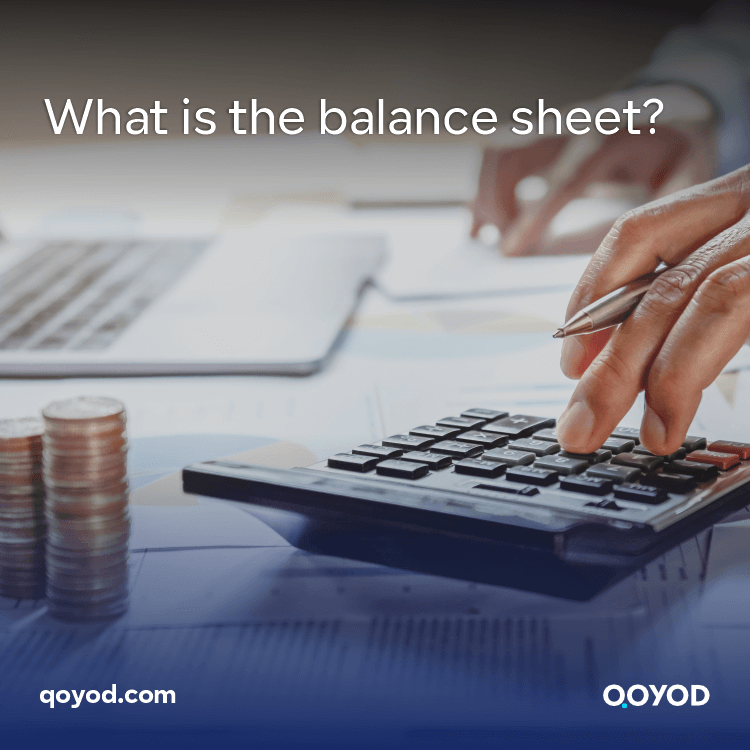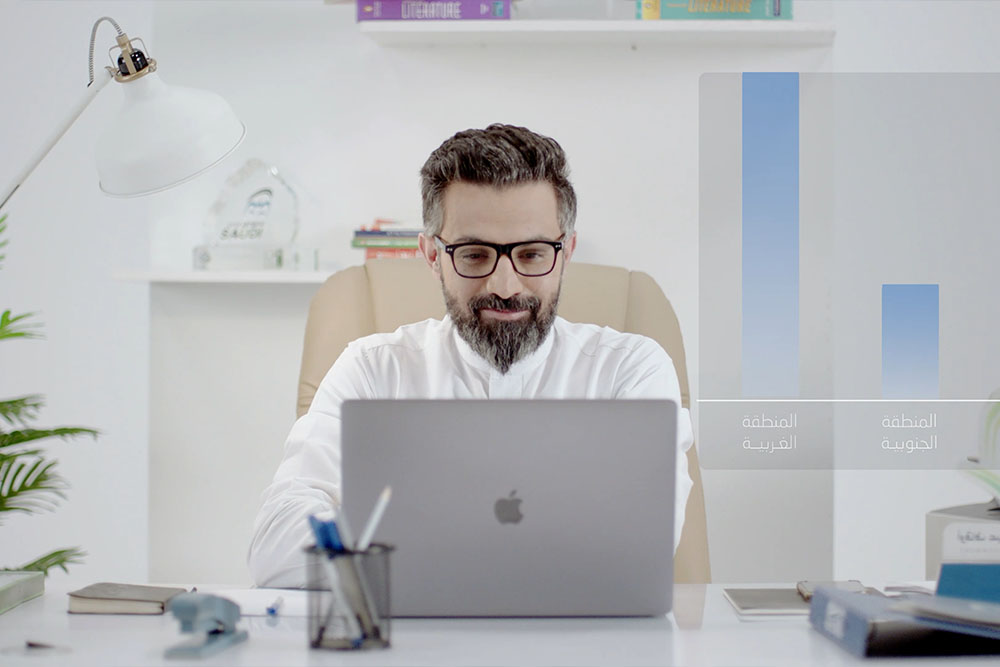- Have you ever wondered how to achieve financial balance and financial accountability in companies and organizations? Would you like to know how money can become an effective tool for planning, controlling, and making wise decisions? If these questions interest you, then the balance sheet is the answer you are looking for. In a world where time accelerates and financial risks increase, it becomes an essential tool for achieving financial stability and success and is more than just a document containing financial numbers and forecasts; it is a strategic tool that helps reveal the current financial situation, determine future steps, and provide managers, investors, and institutions with the ability to understand financial risks and achieve a balance between revenues, expenses, debt management, and investments.
What does the balance sheet mean?
It is an important financial tool used to evaluate the financial condition of institutional units or economic sectors at a specific point in time. It reflects the value of the assets owned by the institutional unit and shows the financial claims (liabilities) owed by that unit or sector.
This budget aims to provide a clear picture of the financial situation of the institutional unit or economic sector, as owned assets are an indicator of the ability to generate wealth and achieve economic growth, while financial claims refer to the obligations and debts owed by the institutional unit or sector.
Types of balance sheets
The balance sheet is used in various sectors, including individuals and small companies. We will explain its types, which are as follows:
Personal balance sheet
It is an important tool for individuals to achieve personal financial planning, manage personal expenses and income, identify sources of income, identify various expenses, and distribute money in an effective and sustainable way.
Steps to prepare a personal balance sheet
Expenses in a personal balance sheet can include many aspects, such as rent, food, transportation, entertainment, debts, and savings. Here are some basic steps for preparing a personal budget:
- Identify all available sources of income, such as salaries and other returns.
- Analyze and classify different monthly expenses.
- Determine priorities and allocate a certain amount to each category of expenses.
- Monitor and track expenses and revenues throughout the month, and make the necessary adjustments.
- Evaluate the results and make necessary improvements for the future.
Small business balance sheet
It is a critical tool for small business success, helping to identify, plan, and monitor expenses and revenues and achieve set financial goals.
Steps to prepare a balance sheet for small businesses
Preparing a small business balance sheet includes the following steps:
- Determine the company’s financial goals and the budget time period.
- Collecting the necessary financial information, such as expected revenues, fixed and variable costs, and planned investments.
- Determine the financial allocation for each department or activity in the company.
- Monitor and compare actual expenses and revenues with the financial planner, and take corrective action if necessary.
- Evaluate and analyze financial results, use them as a tool to improve company performance, and make strategic decisions.
What are the most important items on the balance sheet?
Balance sheet items are the elements that form the budget structure and contribute to analyzing the financial position of the organization. These items include the following:
Assets
They are property and resources that produce economic value for the organization and are used to achieve its financial objectives. Assets are divided into three main categories:
- Current assets include cash, liquid cash equivalents, and inventory that are traded in the course of a business.
- Fixed: includes long-term property, such as buildings, equipment, and property used in the organization’s main operations.
- Intangible assets include assets that do not have a tangible form, such as patents and intellectual property rights.
Liabilities
Liabilities represent the organization’s current and future financial claims and are divided into two main categories:
Current Liabilities: Include business accounts payable, bonds payable in the current year, and short-term business debt.
Non-current: includes bonds payable in the long term and long-term debt that must be repaid within a period of time exceeding one year.
Shareholders’ equity
Shareholders’ equity represents the legitimate source of financing for the institution and includes:
Capital refers to the original financial value of shareholders investing in the organization.
Retained earnings include profits that have been achieved but not yet distributed to shareholders.
What is the purpose of preparing a balance sheet?
It is a financial tool that plans and monitors expenditures and revenues over a specific period of time and has many important objectives, the most important of which are the following:
Disclosure of financial situation
One of the most important goals of the balance sheet is to provide a clear picture of the financial situation of the individual or company, and by preparing that budget, it identifies revenues, expenses, assets, and financial liabilities. This helps in understanding the strength of the financial situation, identifying potential problems, and identifying typical opportunities.
Providing information about creditors and debtors
This budget helps provide important information about creditors and debtors, as companies can know their indebtedness and the amount of debt they owe to external parties. In addition, individuals can know the amount of accumulated debt and manage it effectively.
Display a picture of assets and liabilities.
The balance sheet helps display the complete picture of financial assets and liabilities, as it estimates the value of assets such as cash, outstanding balances, fixed investments, and other property.
In addition, it records financial obligations, such as debts and future payment obligations.
Detection of liquidity positions
This budget helps reveal the liquidity position of the individual or company, as it identifies cash funds, highly liquid assets, and obligations due in a specific period of time. This therefore helps in determining whether the company or individual has the capacity to meet current financial obligations.
Calculating ratios
It also works on calculating important financial ratios that reflect the performance of the company or individual. Ratios can be calculated, such as the gross profit ratio and the net income ratio, in addition to the debt-to-equity ratio. It is worth noting that these ratios provide valuable information about financial performance and efficiency. In financial resource management.
Showing the company’s solvency position
The balance sheet clarifies the company’s financial solvency position, as the assets and liabilities contained in it reflect the company’s strength in meeting financial obligations and bearing risks. This information can therefore be used to evaluate the sustainability of growth and determine future plans.
Providing financial information
This balance sheet provides necessary financial information to concerned parties, such as shareholders, investors, managers, and regulatory bodies, and thus this information helps in understanding the company’s performance and making wise financial decisions. It is worth noting that the balance sheet acts as a tool for transparency and financial accountability.
How is the balance sheet prepared?
When preparing the balance sheet correctly, a series of important steps must be followed, which can be summarized as follows:
Setting financial goals
The process of preparing this budget begins with defining the main financial goals of the institution or entity. These goals must be clear and measurable, such as increasing revenues or reducing expenses.
Objectives must be consistent with the organization’s vision and strategy to achieve financial success.
Financial history analysis
Analyzing an organization’s financial history is an important step to understanding past financial performance and drawing lessons from it. This requires reviewing previous financial data, such as financial statements and other financial reports.
Analyze past revenues, expenses, and balance sheets to identify patterns, trends, and current and potential financial problems.
Determine the expected revenues.
After analyzing the financial history, the expected revenues for the coming period must be determined, and this should be done based on realistic estimates and based on available data and current trends in the labor market or industry.
Estimate expenses
After determining the expected revenues, potential financial expenses must be estimated, and this requires a comprehensive analysis of all possible expenses, such as production costs, marketing, wages and salaries, social insurance, supplies, and materials, in addition to other general expenses.
account
If the balance sheet shows total liabilities of $1,400,000 and total stockholders’ equity of $400,000, the debt-to-equity ratio is 1,400,000/400,000 = 3.5, with the debt-to-equity ratio being 3.5.
Conclusion
In the midst of ongoing financial challenges and rapid economic changes, the balance sheet remains the gateway to financial success and stability, as it is a powerful tool that gives us the ability to understand and analyze numbers, make informed financial decisions, and is the foundation on which financial sustainability and effective planning are built. With the advancement of technology and developments in the field of finance, this budget becomes more important than ever. It is a means of providing financial information in a transparent and effective manner and enabling individuals and institutions to make informed and data-based financial decisions. Therefore, taking care of the balance sheet is not just an administrative duty but rather an investment in the future. It is like a compass that guides us towards financial success and sustainability and enhances confidence and financial accountability.
Let us give you the opportunity to explore the world of the balance sheet with the Qoyod program, and it is worth noting that it also offers all its clients: electronic invoice systems as well as point-of-sale systems, stores, customers, etc., which makes it an accounting program that can become your partner in building a sustainable financial future.
After knowing what a balance sheet is and its types, try Qoyod now for free for 14 days. It is an integrated accounting program.
Join our inspiring community! Subscribe to our LinkedIn page and Twitter to be the first to know about the latest articles and updates. An opportunity for learning and development in the world of accounting and finance. Don’t miss out, join us today!




